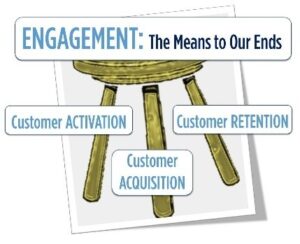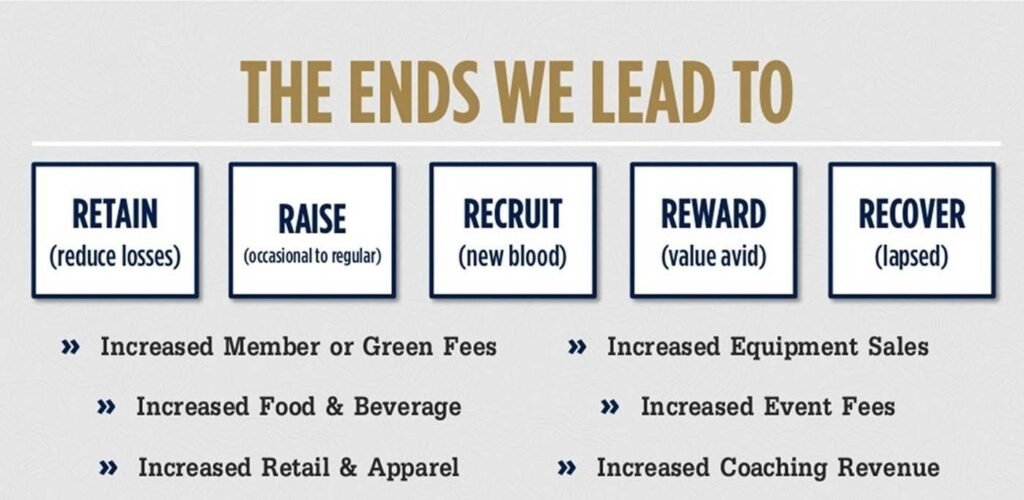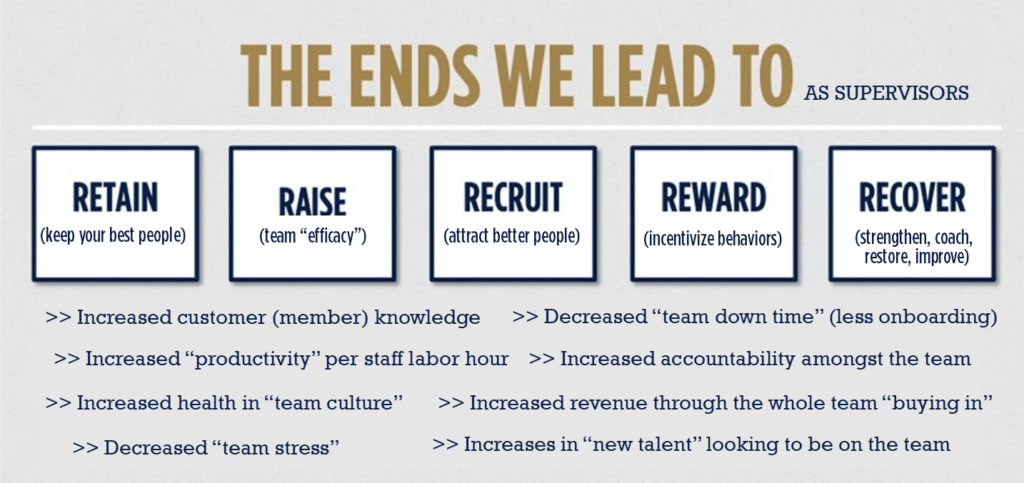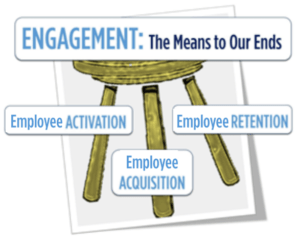 I’ve been talking about the “three-legged stool of customer engagement” for a couple of years now, and the best part for me is how many PGA professionals, employers and stakeholders in the business of golf are catching on to the concept.
I’ve been talking about the “three-legged stool of customer engagement” for a couple of years now, and the best part for me is how many PGA professionals, employers and stakeholders in the business of golf are catching on to the concept.
To reiterate, Customer Engagement accomplishes and drives many tangible benefits for the facility, the golf professionals and the rest of the staff employed there. These include:
- The Five Rs or “The Ends We Lead To” for fiscal success and long-term health as a facility, golf club, etc.
- These “Rs” are generated out of intentional engagement practices executed to enhance:
- Customer Activation
- An “activated golfer” spends +65% more in F&B, +79% more in merchandise, plays +20% more golf in the next 12 months
- Customer Retention
- A “retained golfer” is more loyal to the facility, as they are inspired to keep their spending primarily (or solely) at the facility that continually engages them
- Customer Acquisition
- Activated (flourishing) golfers and retained golfers make for great salespeople who can be “net promoters” (or unpaid salespeople) for the facility, helping us find new customers and keep bringing them “back around”
- Customer Activation
I submit there are Five R’s for Supervisors as well, so I’ll state it again. Engagement is a Supervisor’s Game Too and‒most importantly‒ it is the ability of the supervisor to drive engagement in their staff (team) that has the greatest effect on that team’s ability to execute and deliver “customer engagement.” The latter really only happens at the best possible level if the former occurs first.
Here’s how:

The Five R’s a successful supervisor leads to or “The Ends We Lead To” for team success, long-term health as a service team, etc.
- These “Rs” are generated out of intentional engagement practices by supervisors they deliver as often as possible to enhance employee engagement. These include:
- Employee Activation
- Activating an employee by helping them see their role in the noble cause of the team they are on, and when possible, how their contributions to the team, help the overall facility and/or the whole staff have success
- Activating an employee through inspiration, motivation and incentives to engage the customer; rewarding the right behaviors and attitudes through objective measurements
- An activated employee can help build a team of activated team members whose efficacy increases over time (efficacy is the team’s “blended” view of the team’s capacity to produce and their ability, or desire, to produce results)
- An “activated employee” is more likely to uphold the culture, the standards of effort and performance and expect their team members to do the same
- Employee Retention
- A “retained staffer” is much less expensive than having to replace them. Onboarding is expensive, as is the time before they leave (as often the team culture and/or morale suffers through toxic comments and behaviors)
- “Retained staffers” can have significant customer knowledge and, more importantly, utilize those informational and relational
- Employee Acquisition
- Happy, flourishing employees are engaged – and they believe in their role, cause and team. As a result, they understand and value the situation they’re in, the team they are part of and their ability to be successful, relatively low-stress, etc.
- So, naturally, these employees will often:
- Look to recruit “qualified talent” that will add to the team, and;
- They look to recruit people who will not take down or decrease the team’s culture that has been built, nurtured, etc.
- These same employees will typically be “net promoters” on digital platforms, organically sharing their love for the “place they work” and by extension, promoting the business/brand simultaneously.
- Employee Activation
 To some, this may seem like it’s a “chicken or egg thing.” But I would submit it’s an “egg into a chicken…actually a lot of chickens” kinda thing! As supervisors, employers, owners and similar, if we can help our employees by successfully nurturing them, protecting them first (like an egg), we can get somewhere in Employee Engagement. From there, once they “break out” our “staff engagement team” can work together to produce, deliver and/or execute the facility’s overall player development and customer engagement goals successful. As a result, more eggs (because of more efficacy, “capacity to produce”) can be laid, more can nurtured, hatched and we will see more chickens flourishing.
To some, this may seem like it’s a “chicken or egg thing.” But I would submit it’s an “egg into a chicken…actually a lot of chickens” kinda thing! As supervisors, employers, owners and similar, if we can help our employees by successfully nurturing them, protecting them first (like an egg), we can get somewhere in Employee Engagement. From there, once they “break out” our “staff engagement team” can work together to produce, deliver and/or execute the facility’s overall player development and customer engagement goals successful. As a result, more eggs (because of more efficacy, “capacity to produce”) can be laid, more can nurtured, hatched and we will see more chickens flourishing.
If you are a supervisor, a coach or similar and you’re looking for ways to get better at the “Supervisor’s Engagement Game” in 2020 (and beyond), I can help you create your own engagement plan so you can accomplish this and get better. I have numerous resources I can share with you, point you toward, etc. that can help you win in this particular game of engagement.
Regards,
Monte Koch, PGA Certified Professional/Player Development | Career Consultant
PGA Career Services | PGA of America
Serving PGA professionals, employers in the Pacific NW & Rocky Mountain PGA Sections
Email: Mkoch@pgahq.com Cell: 206/335-5260